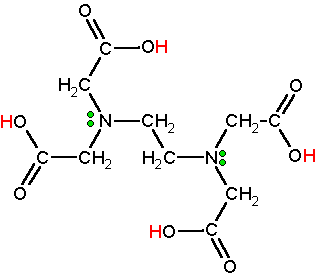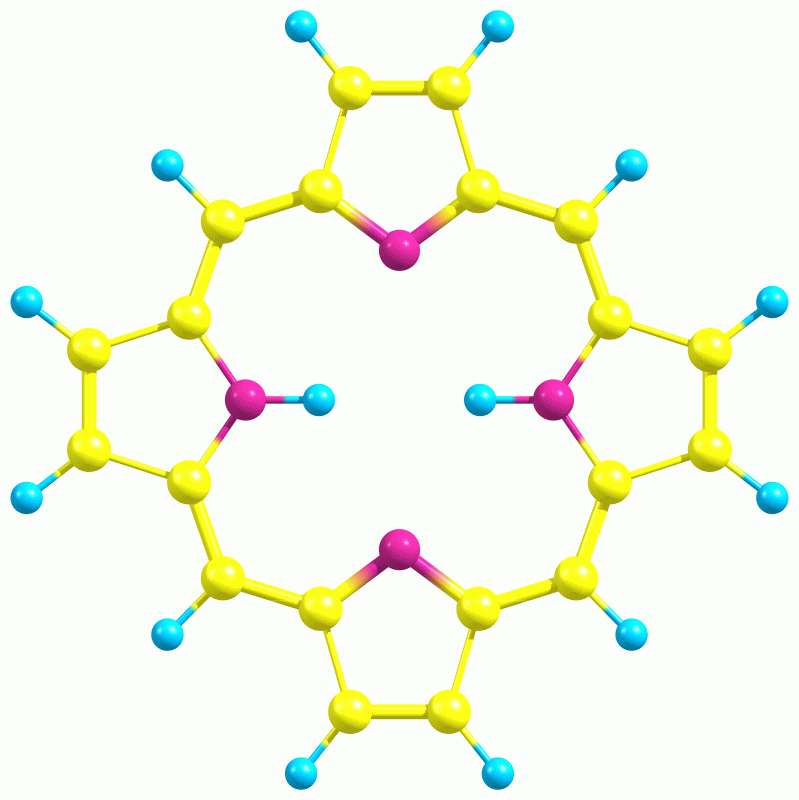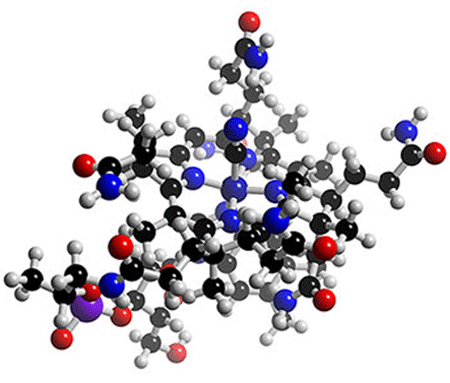For those who want to download our presentation slide, please access the link below:
http://www.4shared.com/file/88573232/870fd36b/grp1_presentationmodified.html
Friday, February 20, 2009
Wednesday, February 18, 2009
GROUP 1
Chang Nyuk Shin (20775)
Fatin Nabila bt. Abdul Aziz (20959)
Julianne Anak Philip Attan (21169)
Mimi Zianna Panchar (21455)
Noor Farahana bt. Halim (21725)
Ng Siau Feun (16811)
Nurhafizah bt. Abdul Zamri (21988)
Peter Alphonso Anak Anthony Nyoel (22117)*
Siti Nurhanis bt. Basir (22381)
Tong King Hua (22562)
Fatin Nabila bt. Abdul Aziz (20959)
Julianne Anak Philip Attan (21169)
Mimi Zianna Panchar (21455)
Noor Farahana bt. Halim (21725)
Ng Siau Feun (16811)
Nurhafizah bt. Abdul Zamri (21988)
Peter Alphonso Anak Anthony Nyoel (22117)*
Siti Nurhanis bt. Basir (22381)
Tong King Hua (22562)
Coordination Bond and Coordination Compound
According to the Werner's theory of co-ordination compounds.
1) Metals possess two types of valencies:
a) Primary valency or ionizable valency. It is also referred to oxidation state.
b) Secondary valency which a metal atom or cation exercises towards neutral molecules or negative groups (ligands) in the formation of complex ions.The secondary valency is also called the coordination number.
Example: In [Pt(NH3)6]Cl4 secondary valency of Pt is 6
2) Primary valencies are satisfied by negative ions, secondary valencies may be satisfied by negative ions or neutral molecules.
3) Ligands satisfying secondary valencies are directed towards fixed positions in space giving a definite geometry to the complex, but the primary valencies are non-directional.
Six valencies are directed towards a regular octahedron while four are directed towards either a tetrahedral manner or square planar.
1) Metals possess two types of valencies:
a) Primary valency or ionizable valency. It is also referred to oxidation state.
b) Secondary valency which a metal atom or cation exercises towards neutral molecules or negative groups (ligands) in the formation of complex ions.The secondary valency is also called the coordination number.
Example: In [Pt(NH3)6]Cl4 secondary valency of Pt is 6
2) Primary valencies are satisfied by negative ions, secondary valencies may be satisfied by negative ions or neutral molecules.
3) Ligands satisfying secondary valencies are directed towards fixed positions in space giving a definite geometry to the complex, but the primary valencies are non-directional.
Six valencies are directed towards a regular octahedron while four are directed towards either a tetrahedral manner or square planar.
Before Werner, chemists defined the valence of an element as the number of its bonds without distinguishing different types of bond. However in complexes such as [Co(NH3)6]Cl3 for example, Werner considered that the Co-Cl bonds correspond to a "primary" valence of 3 at long distance, while the Co-NH3 bonds which correspond to a "secondary" or weaker valence of 6 at shorter distance. This secondary valence of 6 he referred to as the coordination number which he defined as the number of molecules (here of NH3) directly linked to the central metal atom. In other complexes he found coordination numbers of 4 or 8.
Today Werner's primary valence corresponds to the oxidation state, and the secondary valence is always called coordination number. The Co-Cl bonds (in the above example) are now classed as ionic, and each Co-N bond is a coordinate covalent bond between the Lewis acid Co3+ and the Lewis base NH3.
Coordination Compound
A coordination complex is the product of a Lewis acid-base reaction in which neutral molecules or anions (called ligands) bond to a central metal atom (or ion) by coordinate covalent bonds. Coordination compounds and complexes are distinct chemical species - their properties and behavior are different from the metal atom/ion and ligands from which they are composed.
A coordination compound is formed when groups of atoms, ions, or molecules chemically bond with each other by donating and accepting pairs of electrons. Groups donating electron pairs are called ligands. They are usually Lewis bases. Groups accepting electron pairs are often transition metal cations.
They are usually Lewis acids. Chemical bonds formed in this way are called coordinate-covalent, or dative bonds. As in any covalent bond, two electrons are shared between transition metal and ligand. But in a coordination compound, both electrons come from a pair found on the ligand .
The metal cation simply acts as the electron pair acceptor, itself donating no electrons to the bond. Because of the complicated nature of these arrangements, coordination compounds are often called coordination complexes or simply complexes. While nearly all cations can form coordination compounds with ligands. Ligands come in all shapes and sizes, though they are usually non-metals from the right side of the periodic table.
A coordination compound is formed when groups of atoms, ions, or molecules chemically bond with each other by donating and accepting pairs of electrons. Groups donating electron pairs are called ligands. They are usually Lewis bases. Groups accepting electron pairs are often transition metal cations.
They are usually Lewis acids. Chemical bonds formed in this way are called coordinate-covalent, or dative bonds. As in any covalent bond, two electrons are shared between transition metal and ligand. But in a coordination compound, both electrons come from a pair found on the ligand .
The metal cation simply acts as the electron pair acceptor, itself donating no electrons to the bond. Because of the complicated nature of these arrangements, coordination compounds are often called coordination complexes or simply complexes. While nearly all cations can form coordination compounds with ligands. Ligands come in all shapes and sizes, though they are usually non-metals from the right side of the periodic table.
Chelates
The term chelate was first applied in 1920 by Sir Gilbert T. Morgan and H. D. K. Drew, who stated: "The adjective chelate, derived from the great claw or chele (Greek) of the lobster or other crustaceans, is suggested for the caliperlike groups which function as two associating units and fasten to the central atom so as to produce heterocyclic rings."
Chelates play important roles in oxygen transport and in photosynthesis. Furthermore, many biological catalysts (enzymes) are chelates. In addition to their significance in living organisms, chelates are also economically important, both as products in themselves and as agents in the production of other chemicals.
A chelate is a chemical compound composed of a metal ion and a chelating agent. A chelating agent is a substance whose molecules can form several bonds to a single metal ion. In other words, a chelating agent is a multidentate ligand. The example of a simple chelating agent is ethylenediamine and porphyrin.
Chelating agents is used to detoxify poisonous metal agents such as mercury, arsenic, and lead by converting them to a chemically inert form that can be excreted without further interaction with the body, and has been approved by the U.S. Food and Drug Administration in 1991. Though they can be beneficial in cases of heavy metal poisoning, chelating agents can also be dangerous.
Chelating Agent: Ethylenediaminetetraacetic acid (EDTA)
EDTA is a widely used abbreviation for the chemical compound ethylenediaminetetraacetic acid. EDTA refers to the chelating agent with the formula (HO2CCH2)2NCH2CH2N(CH2CO2H)2. This polyamino carboxylic acid is widely used to sequester di- and trivalent metal ions (Ca2+ and Mg2+ for example). EDTA binds to metals via four carboxylate and two amine groups. EDTA forms especially strong complexes with Mn(II), Cu(II), Fe(III), Pb (II) and Co(III).

EDTA is used as a negative ion - EDTA4-. The diagram shows the structure of the ion with the important atoms and lone pairs picked out.
Function of EDTA
EDTA is a synthetic solution used in chelation therapy (pronounced key-lay-shun) for disorders including heart disease, circulatory problems, and lead/metal poisoning. Although EDTA chelation therapy has not been approved by the FDA for heart disease, it has been in the treatment of lead (and other metal) poisoning. In heart disease, chelation uses EDTA to bind with calcium (the glue that holds atherosclerotic plaque to artery walls), which breaks up plaque and carries the deposits out of the body. In many cases, EDTA chelation therapy is used as an alternative to heart bypass surgery.
This therapy is also used to promote healthy circulation, which may prevent gangrene and amputation. Since EDTA chelation therapy binds to and removes metals, it has been used to treat diseases such as Alzheimer's, cancer, macular degeneration (a progressive disease affecting vision), and lupus. It promotes a strong immune system, which aids in prevention and recovery from many illnesses.
Other uses of EDTA are industrial cleaning, as a detergent, in photography, pulp and paper industry, textile industry, agrochemical, hydroponics, also added as preservative for food, in cosmetic and many more.
Porphyrin
The Structure of porphyrin
The name porphyrin comes from a Greek word for “purple”. Porphyrin is a group of chemical compounds of which many occur in nature such as in green leaves and red blood cells. It contains four pyrrole rings. A pyrrole is a pentagon-shaped ring of four carbon atoms with a nitrogen atom at one corner (C4H5N). The porphyrins not only can be found all over the living world but they also bind to the metals. Metal ions such as magnesium (Mg), iron (Fe), zinc (Zn), nickel (Ni), cobalt (Co), copper (Cu), and silver (Ag) are grabed and holded by the four nitrogens in the middle of the porphyrin molecule (which act as teeth).
Importance of Porphyrin
When a porphyrin molecule grabs a metal, it acquires different properties and gets a different name. So, if the central metal is iron (Fe), the porphyrin complex is called ferroporphyrin, or heme. Hemoglobin has four of these heme groups. The iron ion of the heme group is responsible for binding the oxygen. The hemoglobin travels around the body, and when it reaches the tissues the iron in the porphyrin complex releases the oxygen to nourish them.
Moreover, chlorophyll, the all-important molecule that allows plants to do photosynthesis, and is responsible for plants' green color that is made up in part of a porphyrin molecule whose central metal ion is magnesium (Mg).The last but not the least, porphyrins which are universal, found in most living cells of animals and plants, where they perform a wide variety of functions.
Introduction to Vitamin B12
Molecular structure of vitamin B12.
B12 is a water soluble vitamin and is a member of the Vitamin B complex. Also known as Cobalamin (due to its cobalt factor), cyanocobalamin, hydroxocobalamin. Vitamin B12 is produced by the growth of certain micro-organisms and also occurs in the liver. Vitamin B12 has been prepared synthetically. Vitamin B12 cannot be made by plants or animals as only bacteria have the enzymes required for its synthesis. The total synthesis of B12 was reported by Robert Burns Woodward and Albert Eschenmoser, and remains one of the classic feats of organic synthesis.
Vitamin B12 is a vitamin with a key role in the normal functioning of the brain and nervous system, and for the formation of blood cell also growth and development in children. It is normally involved in the metabolism of every cell of the body, especially affecting DNA synthesis and regulation, but also fatty acid synthesis and energy production. Deficiency can cause anemia. Vitamin B12 neuropathy, involving the degeneration of nerve fibres and irreversible neurological damage, can also occur.
Typically, water-soluble vitamins cannot be stored by the body. Vitamin B12 is special, because the body can store it for years in the liver. Because of this, a vitamin B12 deficiency is very rare.
Subscribe to:
Posts (Atom)



